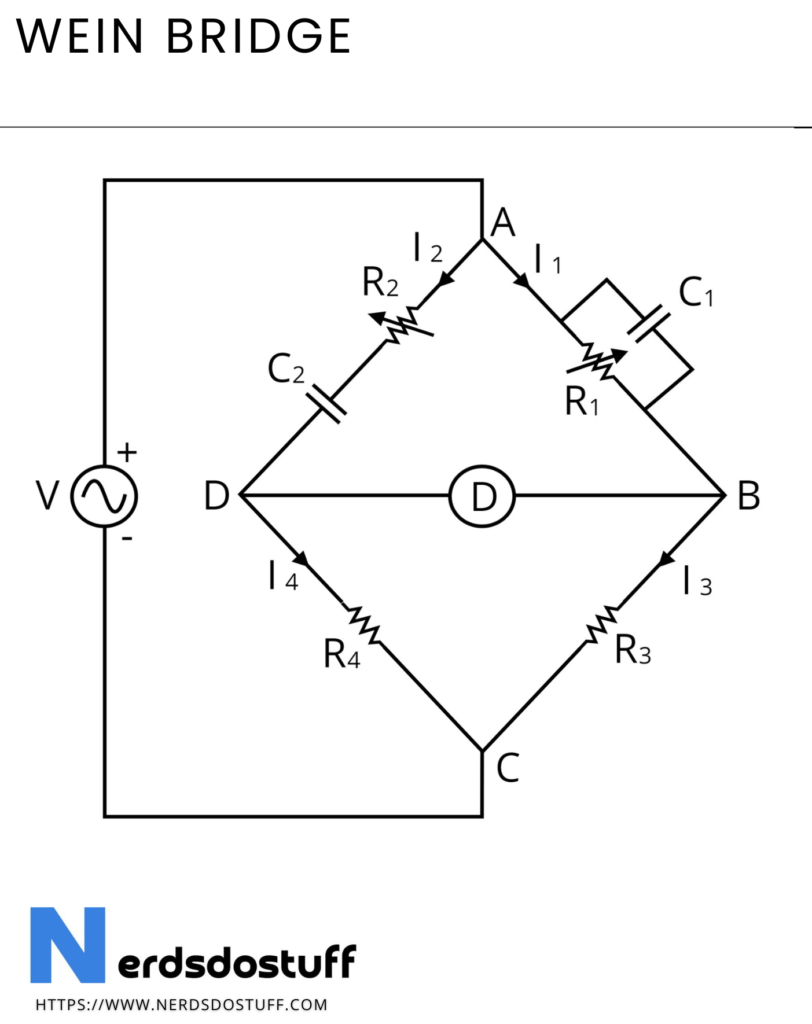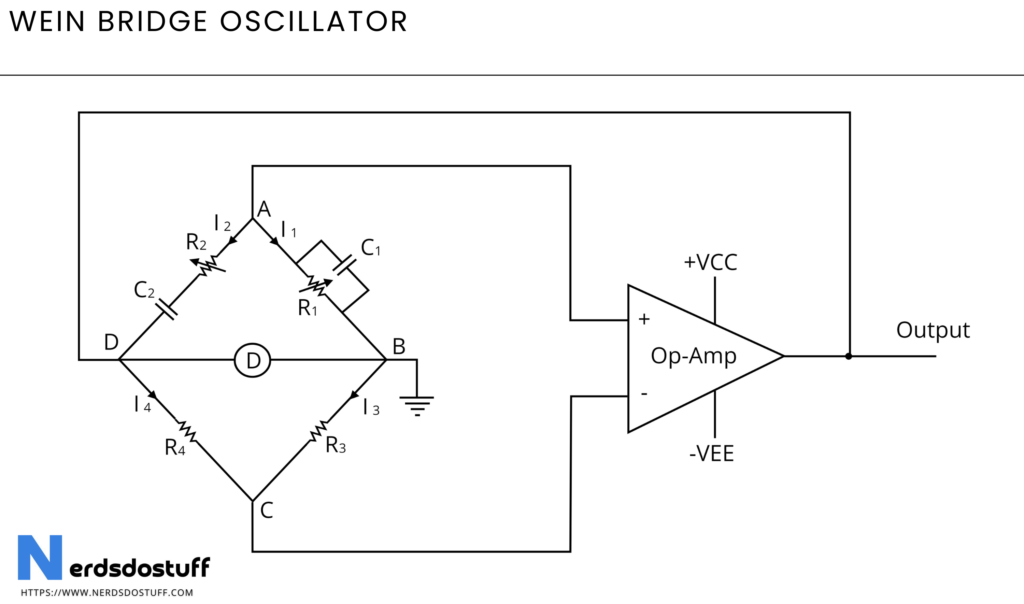What is Wien Bridge ?
The Wein Bridge Oscillator is a type of electronic oscillator circuit that generates sinusoidal waveforms. It employs a combination of resistors, capacitors, and an operational amplifier in a feedback loop to produce a stable oscillating output. The circuit is named after its inventor, Max Wien. The main function of the Wein Bridge Oscillator is its ability to provide a low distortion sine wave output at a specific frequency given by the values of the resistors and capacitors in the feedback network. This oscillator is mostly used in audio frequency applications, audio signal generators, and various electronic testing and measurement instruments because of its simplicity and reliable performance in generating sinusoidal signals.
Wien Bridge Circuit Diagram

Wien Bridge Oscillator Circuit Diagram

Working of Wien Bridge Oscillator
The operation of the Wein Bridge Oscillator is based on the principle of feedback to sustain oscillations. The circuit consists of a bridge network containing two resistors and two capacitors, arranged in a specific configuration. An operational amplifier (op-amp) is connected in a feedback loop across the bridge network. The op-amp amplifies the voltage difference between two points in the bridge, generating an output voltage. This output voltage is fed back to the input of the bridge network, causing a phase shift and creating a positive feedback loop. As a result, the circuit oscillates at a frequency determined by the values of the resistors and capacitors in the bridge network. The oscillation frequency is set such that the phase shift around the loop is 180 degrees, resulting in sustained oscillations and a sinusoidal output waveform. The circuit is designed such that the feedback loop gain is precisely controlled, ensuring stable oscillations with minimal distortion in the output signal.
Where is Wien Bridge Oscillator used ?
- Audio Signal Generators: Wein Bridge Oscillators are frequently employed in audio signal generators used for testing and calibrating audio equipment. Their ability to produce low-distortion sine waves makes them suitable for generating audio frequency signals.
- Frequency Synthesis: The oscillator is used in frequency synthesis circuits, providing a stable and precise sinusoidal output at a specific frequency. This is valuable in communication systems and frequency calibration applications.
- Filter Testing: The oscillator is utilized in testing and measuring the frequency response of filters. Its stable sinusoidal output allows for accurate analysis of the filter characteristics.
- Function Generators: Wein Bridge Oscillators are components in function generator circuits, which are versatile tools used in laboratories and electronic testing environments for generating a variety of waveforms.
- Amplitude Modulation (AM) Transmitters: Wein Bridge Oscillators can be incorporated into AM transmitter circuits for generating carrier signals in communication systems.
- Voltage Controlled Oscillators (VCOs): Modified versions of the Wein Bridge Oscillator can be used as VCOs in frequency synthesizers and phase-locked loop (PLL) circuits.




